As promised, here is my follow-up post to Sleep Training Progress. Before continuing to read, please be advised that in no way am I a sleep expert, and that you should always do your own research and make an educated decision based on your baby and your family’s unique and specific needs. This post only outlines what I have found useful, and which methods worked best for us.
Why sleep train?
Sleep training is certainly not for every family, and not every baby needs it. The reasons we decided to sleep train are:
- Ever since Claire hit her 4-month wakeful period, her sleeping habits became horrible. She was waking up 5x a night and would nap for only 30-40 minutes at a time. While some babies are perfectly healthy and happy on such a schedule, it was clear that she was not one of those babies. She would wake up from each nap still groggy and tired, and her overtiredness would continue to accumulate to a point where she was a cranky, fussy mess at the end of each day.
- We knew that she was physically and mentally ready. Almost all sleep experts will tell you that most babies are ready to sleep train at 6 months of age, and that the majority are actually be ready for gentler methods by as young as 3 months.
Resources:
By far the best resource I have found for sleep training is the Teaching Your Baby & Toddler to Sleep board on BabyCenter. Not only are the ladies there super-supportive and informative, the instructional posts such as How to SUCCESSFULLY teach a baby to sleep have been invaluable sources of information that I returned to again and again, and still turn to now when I have any sleep-related questions.
Personally, I much preferred that particular thread to any sleep-training book. Because when you have a tired and cranky baby on your hands, the last thing you want to do is read through an entire book.
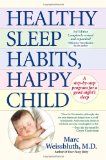 That being said, the two books I found to be most useful for our needs were Healthy Sleep Habits, Happy Child by leading pediatrician Dr. Marc Weissbluth, and Sleeping Through the Night by Jodi A. Mindell, PhD.
That being said, the two books I found to be most useful for our needs were Healthy Sleep Habits, Happy Child by leading pediatrician Dr. Marc Weissbluth, and Sleeping Through the Night by Jodi A. Mindell, PhD.
Healthy Sleep Habits is probably one of the most popular infant sleep books on the market today. It focuses on the parent reading the sleep cues of the child and acting accordingly, with an emphasis on the importance of sleep schedules and routines. While I found the 400+ page book to be chock full of research, data, suggestions and real-life stories, I became impatient after a while because it didn’t seem to be telling me, “If this happens this is how you should handle it.” And that’s where Sleeping Through the Night comes in.
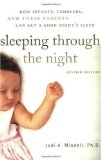 Sleeping Through the Night is written by a psychologist who specializes in infant and children sleep disorders. As a result, one of the things I found most interesting about the book was its stance on the negative and positive associations dealing with sleep. For example, sleeping with a stuffed animal or another favorite object is considered a positive association, while needing to be rocked to sleep is a negative association.
Sleeping Through the Night is written by a psychologist who specializes in infant and children sleep disorders. As a result, one of the things I found most interesting about the book was its stance on the negative and positive associations dealing with sleep. For example, sleeping with a stuffed animal or another favorite object is considered a positive association, while needing to be rocked to sleep is a negative association.
I actually liked Sleeping Through the Night better than Healthy Sleep Habits because it was easier to read and follow, and actually has an entire chapter titled “What to do if…” that addresses common concerns (eg, how to deal with night owls and early risers).
While these two books are what I found to be the best for our situation, needs, and parenting style, others may not feel the same way. One book that is preferred by attachment-parenting advocates and goes by a much gentler approach is The No-Cry Sleep Solution. And if you prefer a firmer, more regimented solution, you can check out Solve Your Child’s Sleep Problems or On Becoming Baby Wise. (Mommy friend Creature Gorgeous got her son, who is one month younger than Claire, to sleep 10 hours through the night by using The Baby Sleep Solution.)
What We Did:
After immersing myself in sleep training books and websites and deciding which method would work best for our family (we were willing to CIO but did not want a strict schedule), I began to keep a sleep log and soon discovered what Claire’s two main sleep problems were:
- During naps, she was having trouble transitioning from the first sleep cycle (light sleep which lasts 30-45 minutes) to the next (deep sleep). Some babies do not have much trouble making this transition, but most need to be taught to do so.
- She was getting the majority of her nutrition at night, during her night feedings. She would only cluster-feed during the day. We needed to reverse this so that not only would she eat more during the day (which should eventually lead to only eating during the day), she will also start to sleep for longer stretches at night.
Solving the second issue wasn’t too difficult. We just started diluting her night bottles with water, little by little. Soon her night bottles just didn’t taste that good and weren’t as satisfying, so she naturally started to eat more during the day.
Tackling the first problem was a lot more difficult. These are the steps I took:
- Since she slept better with a swaddle (for the first couple of months she HATED being swaddled, but then began to depend on it starting at 2.5 months) we continued to swaddle. However, I also knew that we needed to transition out of the swaddle soon because she was almost rolling over from back to front — I was afraid that she would get stuck head down, utterly helpless with her arms tightly bound by her side during the middle of the night when I might not be able to get to her. Besides, she was REALLY starting to fight the swaddle, which is a sign that it’s time to stop swaddling.
- Meanwhile, I ordered a Magic Sleepsuit which is designed to help babies transition out of the swaddle. When it arrived, I stopped swaddling altogether and began to use the Sleepsuit instead. I won’t lie — the Magic Sleepsuit isn’t “magic.” If it did Claire would sleep 12 hours straight during the night and take three 2-hour naps during the day. But it really did help my daughter sleep better, better than when she was swaddled and MUCH better than without anything.
Besides, she looks so stinkin’ adorable in it. It reminds me of Maggie Simpson’s star snowsuit.
Claire now associates the Magic Sleepsuit with sleep. The one night I tried to have her go without it, she woke up 5 times.
- We ordered the Graco Sweet Slumber Sound Machine, which I chose because it’s the most popular baby sound machine on Amazon. Previously we had been using the Cloud b Sleep Sheep, but the Sleep Sheep is set to automatically turn off after a set amount of time and I discovered that Claire would actually wake up when it shuts off. Or, she would wake up to find that the Sleep Sheep is no longer on, and have trouble going back to sleep. I could always reset the timer, but I was getting sick of returning to her room again and again.
The Graco Sound Machine runs all night and all through her naps. And now, whenever I turn it on she knows that it’s time for sleep. I also like that it can run on batteries, and it’s small enough for travel. We keep it on the default sound (which I can only describe as “whooshy white noise”) which seems to do the job just fine.
- At Claire’s age, the MAXIMUM amount of time that she should stay awake between naps is 2 hours. (To see what the recommended amount of sleep and wake times are for infants at various ages, check out this handy chart.) And by observing her and watching for sleep cues — which in her case are her eyes not being as bright and alert, and her drooling more than usual — I was able to determine that the maximum that SHE can go is 1.5 – 1.75 hrs.
Let me make it clear that we never set a strict schedule for Claire because that’s not our parenting style (and we always have things popping up that would disrupt any given schedule). As soon as an hour has passed since she got up, I begin to watch closely for sleep cues and as soon as they begin, I put her to bed, drowsy but awake.
And as any parent who has been through sleep training knows, once you pass this window of opportunity it is likely that your baby will become overtired and it will become even more difficult for him/her to go to sleep. By the time obvious signs of sleepiness, such as rubbing eyes and yawning, come about, most babies are already overtired.
- We let her CIO. Sigh. This was obviously the most difficult part. We began with a modified CIO with timed comfort checks, but I came to realize after a full week of using this method that it was not working for her. Seeing me would just get her worked up even more, and there were times when she would cry an hour straight (an hour was the limit I set for myself) — full on SCREAMING and WAILING, tears running down her face with arms flailing and shaking — and I wanted to gouge my eyes out.
I switched to a more gentle method — the PUPD (pick up, put down) — and she got even worse. My picking her up would make her WIDE awake.
So I decided to go with the extinction model, which is just to let her cry for a set amount of time without doing any checks. It seems so cruel, and there were times when I would just stare at the video monitor and cry myself. But this method worked the best for us, because it only took a couple of days for her to get the hint and start sleeping better.
The trick for nap extensions is that if the baby has not napped for more than an hour, you should let her CIO (or use whatever sleep training method you are using) until that hour is reached. And by day three of the extinction method of nap extensions, Claire was taking at least one 1+ hour nap per day, and within a few more days she began to take at least one 2-hour nap per day.
And it’s funny, because remember how I mentioned in the Sleep Training Progress post that she was still waking up 3 times a night? As soon as she began to nap better during the day she naturally cut out one night waking. She now sleeps in stretches of 6hrs, 4hrs, then 2hrs each night which is what many pediatricians and sleep experts recommend for babies her age.
And that’s how we did it. Claire’s sleeping is still not perfect, but it’s soooooo much better than before. What Dr. Weissbluth says about infant sleep is true: a well-rested baby is happier, more alert and attentive, and better able to concentrate. Additionally, getting your child to develop good sleep habits early will help prevent sleep disorders as he/she gets older.
Like I said at the beginning of this post, please do your own research and decide what is best for YOUR family. But if there is one thing that I want to tell EVERYONE, it would be this:
Start early. If you plan to sleep-train your child — no matter
what method — do the research as soon as possible (I recommend
before the baby is born) so that even if you don’t start sleep
training right away, you can help prevent bad sleep habits.
I wish that I had done my research beforehand, but I didn’t because I knew that we wouldn’t start sleep training until Claire was at least 3 months old. Little did I know that I was creating bad habits that I had to work hard at to break.
Good luck, and please let me know if you have any questions!
ETA, August 2013:
I’m sorry I haven’t responded to all the comments below, especially the newer ones. The truth is that this post was written over two and a half years ago after we sleep-trained my first, and it’s been over a year since we sleep-trained our second….and we still struggle with sleep from time to time! I am not a sleep expert, and as much as I would like to help everyone who reaches out to me, I just don’t feel that I have the experience or qualifications to answer your questions. Every baby is unique, and every situation is different. Please check out the BabyCenter sleep-training board linked to at the beginning of this post — Teaching Your Baby & Toddler to Sleep — the ladies here are much more experienced with sleep training matters than I ever was, or will be. Good luck, and sorry I can’t be of more help.
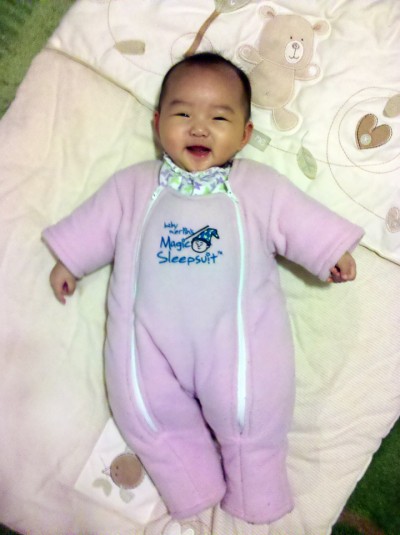

![My Holiday Sales-Slash-Birthday Beauty Haul [Food Poisoning Edition] 20141207181837172](https://www.geekinheels.com/wp-content/uploads/2014/12/20141207181837172-130x130.jpg)
![Toilet-Training Claire [Or, How We Completely Lucked Out] prince_lionheart_pottypod](https://www.geekinheels.com/wp-content/uploads/2013/06/prince_lionheart_pottypod-130x130.jpeg)
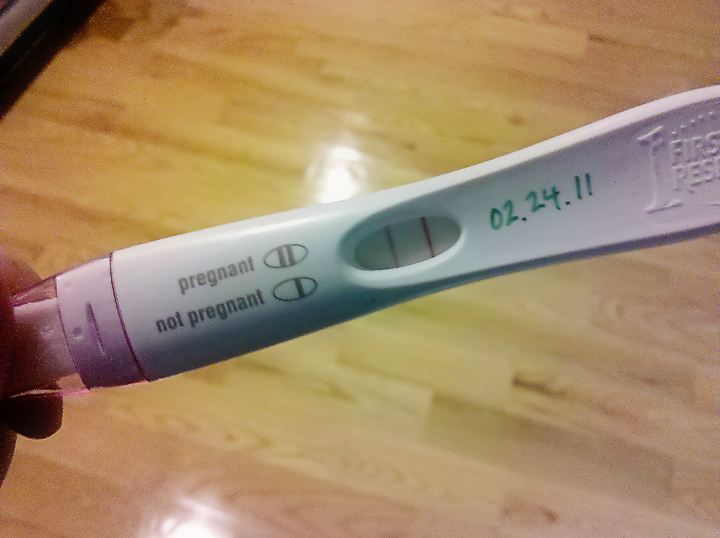
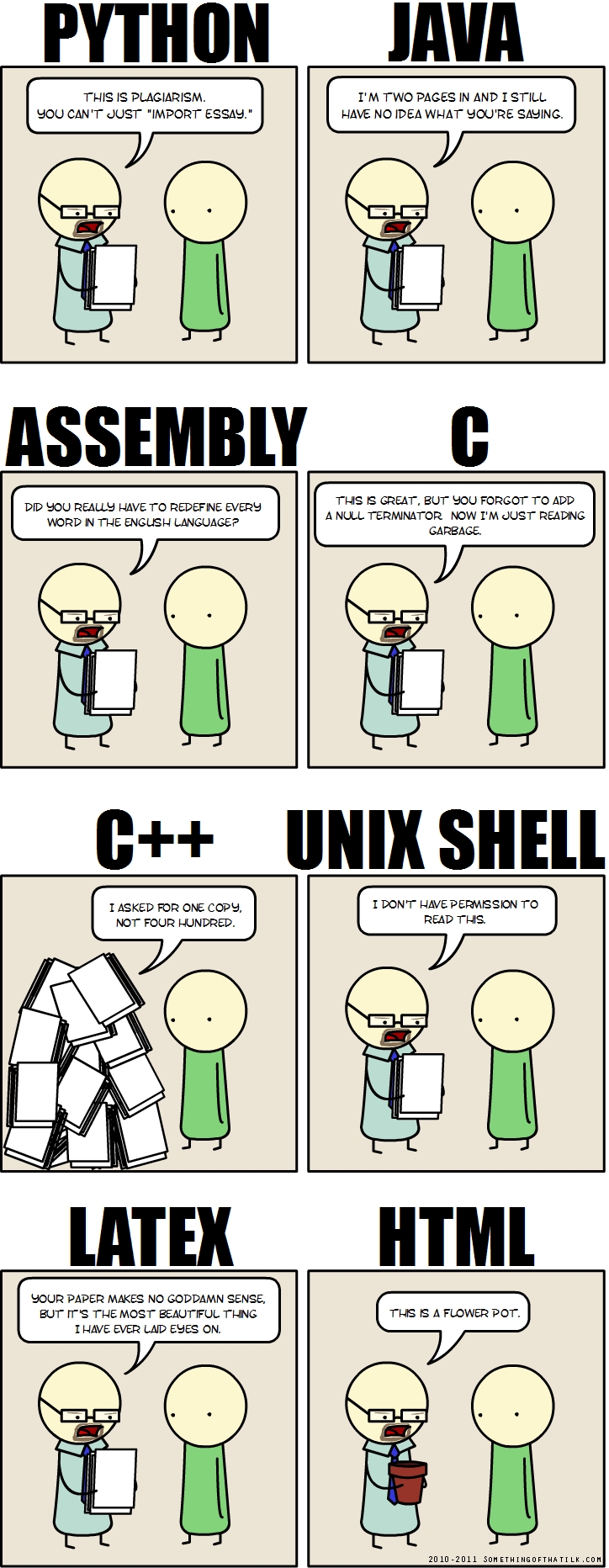
Marv
Hi, I stumbled upon your site while looking for information on nap training. My son is one week away from turning 6 months and like you’ve mentioned, ever since he turned 4 months, he’s been a chronic cat nappers 4-5 times a day and I didn’t mind at first, but he seemed tired and ready to go for a nap again as soon as he woke up. The most he would sleep was 45 minutes (If I’m lucky), most of the time it’s 30 minutes.
He is a good night sleeper though. He would put himself back to sleep after nursing (if he doesn’t fall asleep after nursing). But, nap time he just treats it differently and I”m so desperate to end this cat napping habits and nursing to sleep behavior
I’m watching his cues closely and he just couldn’t pass that 30-45 minutes cycle without me nursing him back to sleep. That’s our main issue I think, nursing to sleep. I nursed him on demand and find it hard to follow eat,play,sleep schedule. So, I’m working on nursing him to the point where he slowed down his sucking and I would stop and put him in his halo sleep blanket and put him down awake and today his day one and let him CIO 🙁
I’m glad you mentioned about how to extend nap if they sleep less than one hour and to let them CIO again until that one hour is up. My only concern is his eating, because I keep wondering what if he’s hungry and things like that because we nurse on demand.
tina23
Great article. Here are some more great sleep training tips http://violet-sleepbabysleep.blogspot.com/2012/12/sleep-training-basics.html
Pingback: Good Sleep, Good Baby | Barbara
Emily
Do you do the cry it out with out a swaddle? So they can soothe themself?? I can’t figure out if I can sleep train while still swaddling?!
Marika Lewis
My son Wyatt is going through exactly what Claire went through with the daytime catnapping/inability to transition from light to deep sleep cycles and frequent night wakings. He is about 3.5 months and I’ve been contemplating sleep training for a week but was wondering if he’s too young for CIO full extinction. But after reading your post, I now have the courage to try it and plan to start this weekend! Thank you so much for sharing your experience with us sleep deprived mamas!! ?
Hanna H
Marika, will you let me know how it went for you? I have the same exact issue with my 3.5 month old and am debating starting now due to her younger age. I see that you commented less than a month ago! Would love to hear your story!
Hanna
Marika
Hi Hanna, I did end up doing full extinction CIO at 14 weeks with my son. I was pleasantly surprised by how little he ended up crying overall.
Night 1– 20 minutes
Night 2– 6 minutes
Nights 3-5– whimpered about 5-10 minutes
Since then he has been giving us 5-8 hour stretches, 1 wake up feed around 2/3am, and then back to sleep until about 6am.
He did attempt an “extinction burst” on day 7 where he woke after 3 hours but I let him cry. So since then, his night sleep has definitely improved! However, I have NOT nap trained him yet. He’s stil catnapping but I wanted to wait until he officially turns 4 months on 4/24 to see if his naps will lengthen naturally first. If not by end of next week, I plan to nap train starting 8/29! Wish me luck 🙂
Hope that was helpful!
Michelle
Did you sleep train with extinction in the sleepsuit or just swaddle?
Dona
I tried a lot of methods with my daughter and they all were hopeless. My sister has found something about the HWL method by Susan Urban and she’s tried it. After a few days she couldn’t believe that it was so easy to get rid of rocking my nephew to sleep. He also stopped waking up at night to eat.
I wasn’t convinced and I thought it won’t be that easy with my LO but turned out it took us 3 nights to drop all her bad habits and she was able to fall asleep on her own! Shocker!
The method is easy but to get it right you must follow the instructions. I’ve found the HWL description in this guide “How to teach a baby to fall asleep alone” on I suppose the author’s website: http://www.parental-love.com
I’ve recommended the guide to all my friends with kids- always success so now I know that the method is great and I can share it because I know that parents need help here.
Susan
Dona you were right! this method works. I got the guide and I only wanted to be able to put my son in his own crib and have him fall asleep on his own. I just thought it was impossible. After a few days (exactly 4 days) fortunately I can say that I was wrong! my boy doesn’t need to be rock to sleep anymore! Thanks!!!!!!!!!!!!!!!!!!!
Pingback: 5 Best Baby Sound Machines for Sleep Training • Soundproofing Tips